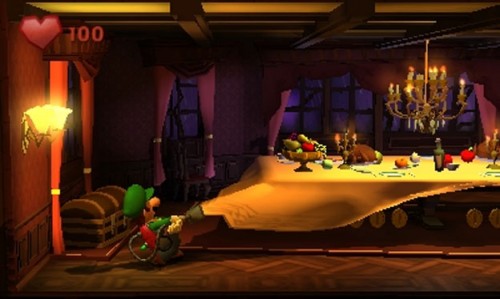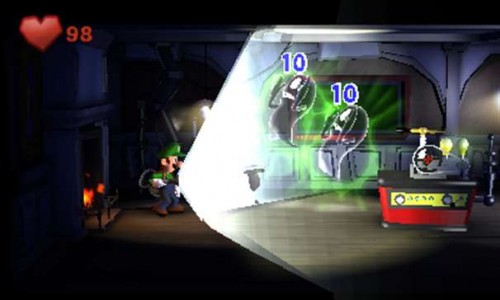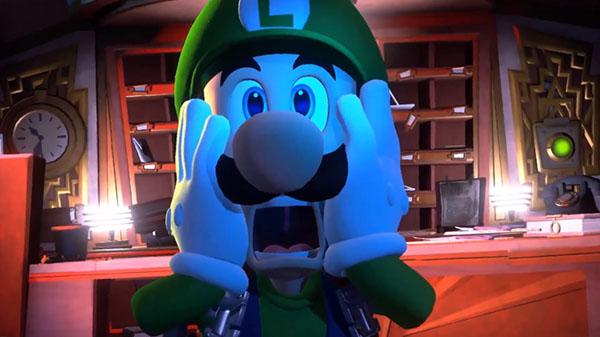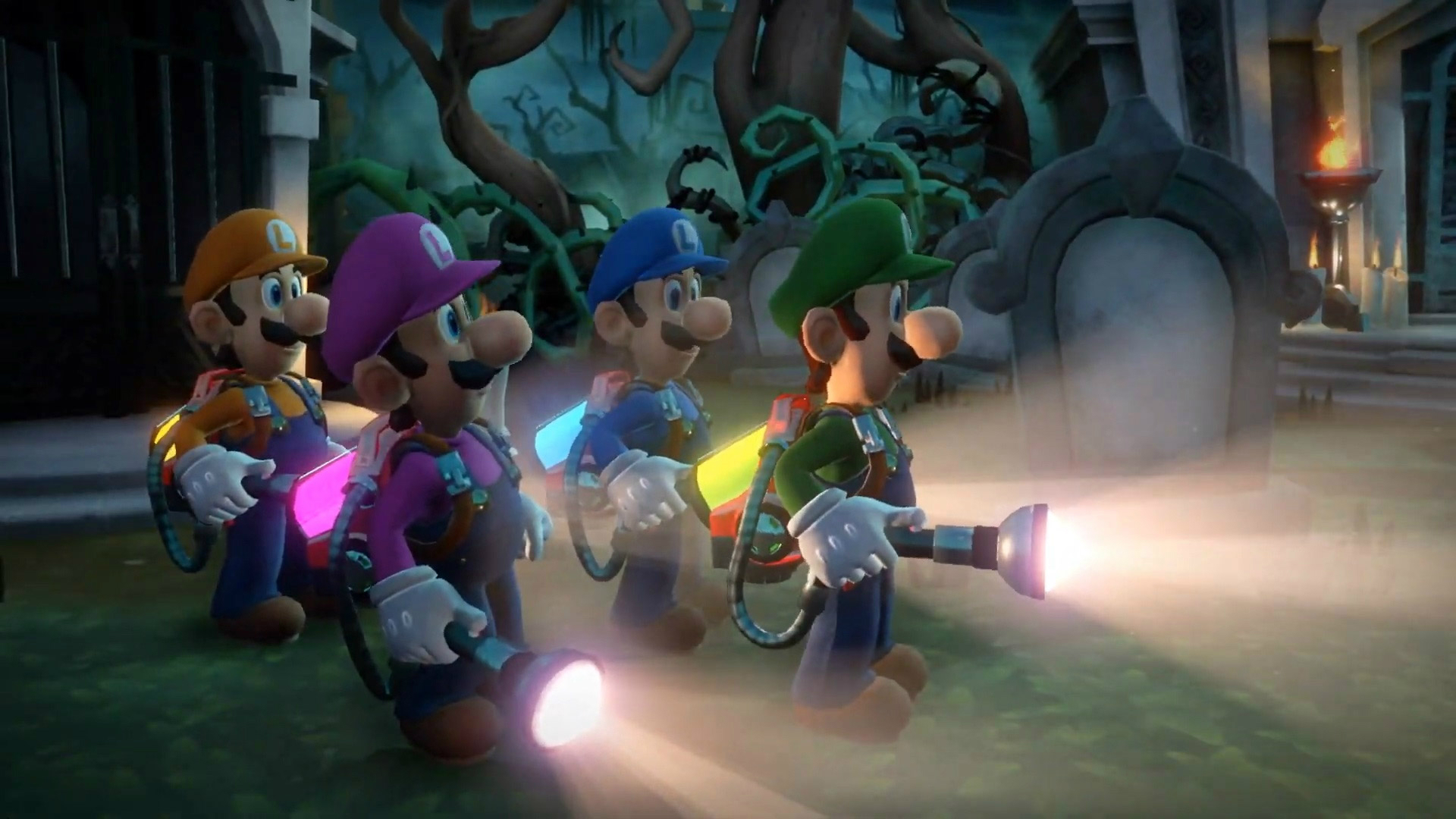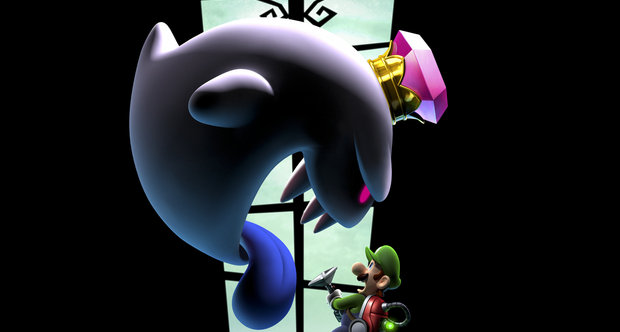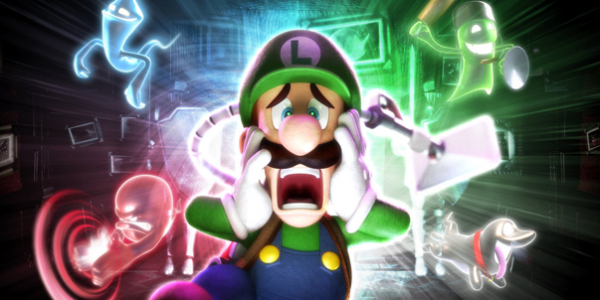
Luigi’s Mansion 2 had me fooled. Delayed ad nauseum, I’d become convinced the green machine’s latest ghost hunt would remain locked ironically within the fabled “development hell”. Not so. Luigi’s Mansion 2 is indeed a very real thing to be very much released, later this month in fact. And so, to show just how far this game has come since its announcement almost two years ago, Nintendo of Australia invited me inside their own marginally less terrifying mansion to take see what kind of chops Mario’s older brother has when coming face-to-face with the necromantically conjured souls.
Okay, so maybe these ghastlies aren’t aimless spirits of the long dead. Honestly, I’m not entirely sure what Boo and his transparent entourage are, suffice to say they’re simply ‘ghosts’ and they’re not welcome. Not welcome here. Not welcome there. And definitely not welcome in this rickety old mansion. And who better to send them an eviction notice than Luigi?
Luigi’s Mansion 2 (or Luigi’s Mansion: Dark Moon, as it’s called in the United States) returns Luigi to his iconic, cult classic adventuring that many associate with the launch of Nintendo’s GameCube. And in the eleven or so years that have passed since the very original Luigi’s Mansion, it’s clear both Next Level Games and Nintendo is keen to bring new mechanics and ideas to the table with Luigi’s Mansion 2.
Folk might remember Luigi’s Mansion acting as a frontrunner for the GameCube’s twin stick control pad, one stick controlling Luigi while the other directs the torch and vacuum As the 3DS lacks a second stick (Circle Pad Pro is not supported), this is no longer possible. However, the game and puzzle structure has been redesigned around the system’s limitations, or I should say better suited towards its strengths, as face buttons now allow Luigi’s to quickly aim on a pre-set vertical axis. Think like old school Resident Evil: aim up, aim forward, or aim down, though far less cumbersome.
Intelligently, the simplicity of these set axis have been noted in the level design, as most everything Luigi needs to suck or blow with his vacuum is aligned within the three core directions. And you’ll do plenty of said sucking and blowing. Next Level Games have gone above and beyond to ensure every room (from what I played) resonates with the tools at the player’s disposal. Mostly this means you’ll be sucking up a lot of rugs, unfolding carpets, rattling blinds, knocking pots, and so on, in order to indulge in the various riches that for whatever reason spill out. Cash goes towards upgrading Luigi’s abilities, unlocking new functions for the vacuum and giving him different ways to interact with the game world. The depth of this upgrading mechanic was impossible to judge from my playtime, though I’m hoping it leads to some interesting surprises. Regardless of where the upgrading goes, the team has done an excellent job of developing a visually reactive world. I was worried that the mansions, in all their gloomy stillness, would stand motionless like statues to Luigi’s exploration. But from the moment you turn on the vacuum the game world reacts, elements of the environment shaking, rattling, and toppling over.
And this, at the very least, grants all that treasure hunting a sensation of reward for your curiosity. It would have been easy to artificially construct interactive versus non-interactive assets, predictable and transparent, but by having a game world that believably moves and responds to your sucking and blowing develops an element of surprise and discovery with the player. What happens when I blow on that pin-wheel Can I suck that tablecloth off the table? What’s in this pot? Even if it’s an illusion, it convincingly sells environment and content density.
Nintendo apparently wanted to shift level design in this sequel towards more puzzle solving, and this was visible in what I played. Progression through the mansion requires acquisitions of keys, which are either hidden in the environment itself or in the possession of ghosts. For the former, acquiring the key simply required understanding and mastering a simple gimmick, such as blowing air on a pin-wheel to lower a chandelier, or using the torch’s flash ability to unlock a safe. In the case of the latter, I had to first find the ghost carrying the key, which was really an extension of the former. Ghosts, bound not to physical limitations, were usually hidden in the environment and too required some kind of sucking/blowing gimmick to expose.
Wrestling keys from the ghosts required I conquered said ghosts in true Ghost Busters style. Suck ’em up. Or in the case of Luigi’s Mansion 2, the one-two-punch of flash and suck, which sounds a lot dirtier than it is. All ghosts must be put into a vulnerable state before they can be exorcised by the holy vacuum, which is done so by the aforementioned torch flash. Point in the direction of a ghost and flash, and he/she/it will become fully visible. Then all you gotta do is suck. You’re given a limited amount of time to contain each ghost, and wrestling them into the vacuum’s dustbin is not unlike fishing. As the ghost flails around the screen trying to escape I had to tilt the stick in the opposite direction, “reeling them in” so to speak. It’s a very simple mechanic that goes some ways to make ghost fighting a wee bit more involved than “press the win button”.
My only concern with both of the above is how rich the design grows as the game progresses. I was only able to sample the very first two introductory levels of the single player, and thus limited in witnessing how far the game goes with its concepts. To Next Level’s credit, these were paced quite excellently and did a great job of quickly introducing new concepts, whether they be ghosts or puzzles, through cute and humorous setpieces and seamless gameplay without retiring to repetition. Naturally any depths to mechanics, and how puzzles develop, would not be evident in what I sampled, so I’ve got my fingers crossed the full game maintains a similar pacing and development of mechanics over the course of an entire adventure as with what I experienced.
I did however get a taste of what late game content will offer through the multiplayer. New to the series, Next Level has introduced a four player co-operative mode both available as online and local (including download) play, and it tasks all would-be ghost hunters with scaling the Scarescraper. It’s like a test of endurance: you start on one floor, work together to defeat whatever puzzle or challenge is thrown at the group, and if successful move to the next. And so on, until you hit the fifth floor and fight a boss. Nintendo of Australia put us on hard, which proved to be counter intuitive to getting to the boss floor, but helpful in exploring some of the later game content, like ghost and tool variety. Our team faced ghosts armed with masks and hockey sticks. When they weren’t beating us like angry sports fans we had to time our torch flash to just before they swung their weapons, else their masks would shield them from the light. We also confronted one monstrous ghost who took up more room space than I care to mention, the perfect kind of super enemy that requires all players sucking in unison. On the tool front we got to play around with some new environment gimmicks, such an explosive like device that must be sucked in and then launch by the vacuum.
In all honesty I was quite surprised with the multiplayer. A part of me was expecting a throwaway mode not unusual for a predominantly single player game, but with Luigi’s Mansion 2 the multiplayer seems to be aiming to replicate a very similar structure to the main game, only designed around four player co-op. You’ve still got a series of rooms to explore, and they’re just as interactive as before. It’s certainly more “gamey” than the single player, but it’s also mechanically sound. Much like the single player variety in play and content will be the deciding factor in whether the multiplayer can be elevated beyond an enjoyable distraction, and what I played warrants the optimistic approach.
There’s still quite a bit to learn about Luigi’s Mansion 2. Again, it will all come down to how the final game comes together: not a sampled experience, but a series of missions and mansions back to back. Variety is key, as is a sense of development and progress. Thankfully this is one of Nintendo’s strongest areas, and though my time with the campaign was early and brief, there was good evidence to suggest Luigi’s Mansion 2 is a tremendous effort on both Next Level and Nintendo’s part. Commissioning a plumber armed only with a vacuum cleaner and flashlight to clean out a spectre riddled run down mansion in breach of numerous OHS orders might seem like a terrible idea on paper, but it sure is shaping up to be one fun little game.

